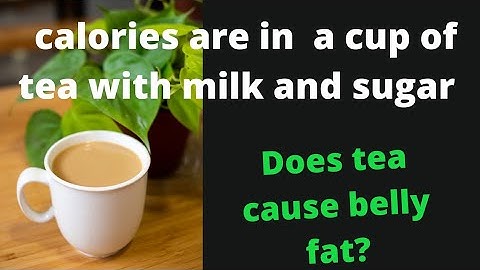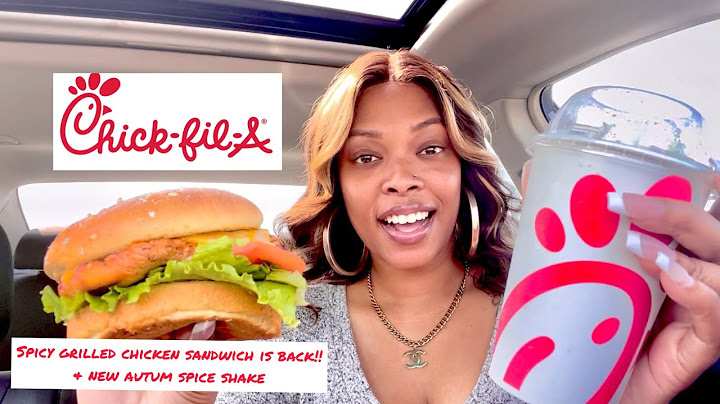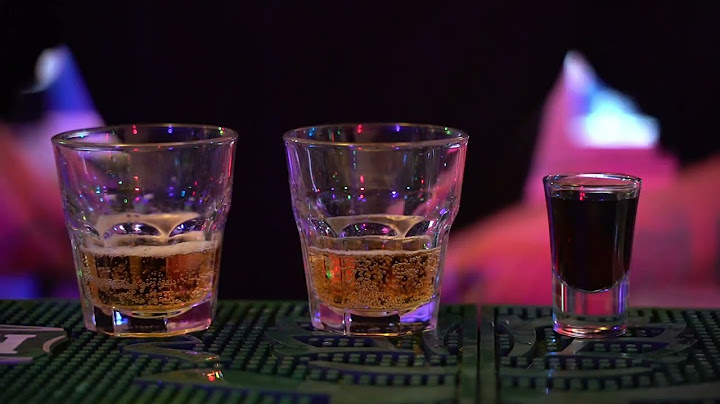Calories, the ultimate buzzkill to think or talk about, especially while drinking. Calories are like that friend that you're not really sure why you are friends, but then they do stuff like always DD and keep you alive, so then you remember why you put up with them. Calories are a necessary evil. Show
So, let's get this over with, what should we know about calories and wine? Calories Per Glass Of White WineCalories and wine come from alcohol and sugar. Wine is made up of alcohol, carbohydrates, and trace minerals. The carbohydrates in wine come from the residual sugar that is left in the wine. FYI, alcohol adds a higher calorie count to wine than sugar, with seven calories per gram. In contrast, sugar content adds around four calories per gram. With that in mind, you can assume the more alcohol by volume, the more calories a glass of wine will have. A wine's sweetness dramatically impacts the number of calories in white wine. Why? During fermentation, yeast is a queen who uses her superpowers to turn natural sugar into alcohol. To make a sweeter wine, winemakers prevent the yeast from eating up all of the sugar. This leaves a little residual sugar that allows the wine to be sweet. In contrast, dry wine is allowed to thoroughly go through the fermentation process and leave a wine with some sugar in it but very little. The sweeter the wine, the more calories it has. Dry white wines have zero to six calories from sugar, off-dry wines have 10 to 30 calories from sugar, sweet wines have 30 to 72 calories from sugar, and very sweet wines have 72 to 130 calories from all that extra sugar. The frustrating thing about wine is that it doesn't have nutritional labels. Apparently, the FDA believes that alcoholic beverages are not classified as nutritious and, therefore, do not deserve a nutrition label. FDA, if you're reading this, we'd like to point out that wine does have health benefits like lowering the chance of stroke and heart disease. If you're attempting to decipher how many calories are in a bottle of wine because you're on a healthy eating kick, here's a trick: add the calories of alcohol with the calories of carbs. Here is a break down of the different types of white wine: Chardonnay: The most popular type of wine since the 1990s, Chardonnay is bold and dry with intense flavors. In a five-ounce serving of Chardonnay, there are 123 calories. Sauvignon Blanc: Because this wine is dry, you can expect it to have very little residual sugar. A light-bodied, herbaceous wine with herbal aromas like grass and bell pepper, Sauvignon Blanc has 122 calories per five ounces glass. Semillon: Bold and dry, like Chardonnay, this wine is filled with intense flavors of lemon, pear, apple, and green papaya. Per the five-ounce serving of Semillon, you can expect around 122 calories in a serving size. Moscato: With few residual sugars, Moscato is light, sweet, and very aromatic. It typically has around 127 calories in five ounces of wine. Pinot Grigio: Light-bodied, dry, and zesty with fruity flavors like lime, pear, lemon, apple, and white nectarine, Pinot Grigio clocks in at 120 calories per five-ounce serving. Gewürztraminer: With just a touch of residual sugar, Gewürztraminer is full-bodied with low acidity. This spritzy wine has about 118 in a five-ounce serving. Riesling: Slightly sweet and very aromatic, Riesling has primary fruit aromas of orchard fruits like apricot, apple, pear, and nectarine and is sometimes considered a dessert wine. For a five-ounce glass of Riesling, you can expect around 120 calories. Can I Drink Wine While On a Diet?Understanding that wines have different calorie content doesn't exactly help you know whether you're allowed or should drink wine while on a diet. First of all, you're allowed to do whatever you want. It's your world; wine is just living in it. Second of all, it could also depend on what diet you're doing and if it's for weight loss. If you've cut all carbs and sugar, we're going to make a logical assumption that alcoholic drinks are not on your list of okay foods. There are millions of diets out there, so make sure you understand what is and isn't allowed on whatever diet program you are following if you're watching your waistline. The truth is wine, in general, doesn't have that much sugar or calories, whether its white or red wine. But, after a few glasses, wine calories and sugar really start to add up. So here's the thing to remember with wine and alcohol in general: moderation is key. In fact, moderation is actually crucial in pretty much everything we do. And yes, we feel like this has been told to us hundreds of times, but then we over workout, overeat, over obsess over an ex on Instagram…. the point is, moderation is challenging but essential. To be healthy or go on a diet, science indicates that excessive alcohol intake does slow fat burning and cause weight gain. Takeaway: if you're worried about losing weight or gaining weight, simply think moderation. Lastly, as good friends to wine, we must also defend its honor and share that wine does have beneficial aspects. For example, wine has been known to increase good cholesterol and reduce the odds of heart disease. So basically, if you're drinking lower-calorie wines, like Bev, and drinking in moderation, keep doing you! You're killing it! If you're looking for wines that are low in calories, here are some tips: Reach for bubbly: sparkling wine is the easiest way to reduce calorie intake from wine, especially if they're brut, so pop that Prosecco! Look at the ABV Percentage: Lower alcohol means a lower your calorie intake. Wines with nine to thirteen percent will provide you with fewer calories than a wine with a higher alcohol content like a Red Zinfandel. Stick to your dry wines: The sweeter the wine, the more calories. We think we've mentioned this before. Watch your pour: as we mentioned, wine is typically that high in sugar or calories, but after a few glasses, the sugar and calories start to add up. Another option: stick to canned wine, like Bev, where you can monitor your intake and calories precisely! What Does "Low-Calorie" White Wine Mean?There are two different types of low-calorie wine: naturally low-calorie wine and wine that was produced specifically to contain fewer calories. As we discussed, natural low-calorie wines are dry and low in alcohol. These wines are made from colder winemaking regions because grapes from these regions don't produce as much sugar as wines in warmer climates. Wines that are made specifically to be low calorie are different than naturally low-calorie wines. Typically these wines have fewer calories because they limit the amount of alcohol content. In our minds, the real definition of low-calorie white wine is Bev because our cute ladies are 100 calories per 5 ounces and 160 per can! How many calories are in a glass of sweet Riesling wine?For medium-dry Riesling wines, a glass of wine will contain about 20-30 calories, and the sweet Riesling will contain anywhere from 30-130 calories per glass.
How many calories are in an 8 ounce glass of Riesling wine?There are 184 calories in 8 ounces of Riesling Wine.
How many calories are in a 9 oz glass of Riesling?There are 207 calories in 9 ounces of Riesling Wine.
What type of wine has the least calories?Low sugar wine, such as sparkling Brut, comes in at a mere 110 calories per 5-ounce glass. That's about the same as a banana. Sparkling rosé has even less, with just 100 calories per glass. Prosecco is another lower calorie choice.
|

Related Posts
Advertising
LATEST NEWS
Advertising
Populer
Advertising
About

Copyright © 2024 en.frojeostern Inc.

















